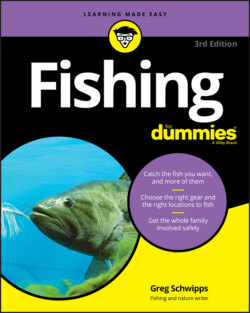Читать книгу Fishing For Dummies - Greg Schwipps - Страница 120
Pacific salmon: Not just in the Pacific anymore
ОглавлениеPacific salmon come upstream to spawn just as Atlantic salmon do. The Pacific salmon’s flesh is pink, just like the flesh of an Atlantic. They even taste the same. But the six species of Pacific salmon are completely different animals than the Atlantic salmon, which is the only true salmon. (The Pacifics are the much larger, mostly ocean-going cousins of the rainbow trout.)
The home range of Pacific salmon runs from Northern California up to Alaska and over to Siberia. Some years ago, Pacific salmon were introduced into the Great Lakes to help control the spread of the alewife herring. The alewives were so plentiful and the salmon fed so well on them that the Great Lakes now hold the greatest fishery for both the coho and chinook sportfisherman. In the Great Lakes, Pacific salmon are a favorite among trollers. This method of taking fish, of course, requires a hefty boat and expensive gear. Shallow-water and stream anglers have the most luck when the fish gather at stream mouths and within the streams themselves during their spawning migrations. Fishing when the salmon are still bright, or fresh from the ocean or lake, can be great sport with these brawny, athletic fish. As with many saltwater fish or as with fish that spend a good amount of time in saltwater, the chinook and coho like flashy, bright-colored lures that imitate the smelt and alewives they feed on.
Figure 4-16 shows the coho and chinook salmon. The usually smaller coho has black spots only on the upper part of its tail, although the chinook’s tail is spotted on both top and bottom. The chinook’s dorsal fin is spotted; the coho’s isn’t. The gum in the lower jaw of the coho is grayish, but the same gum in the chinook is black.
© John Wiley & Sons, Inc.
FIGURE 4-16: The coho (a) and chinook (b) salmon present fun big-water challenges.
